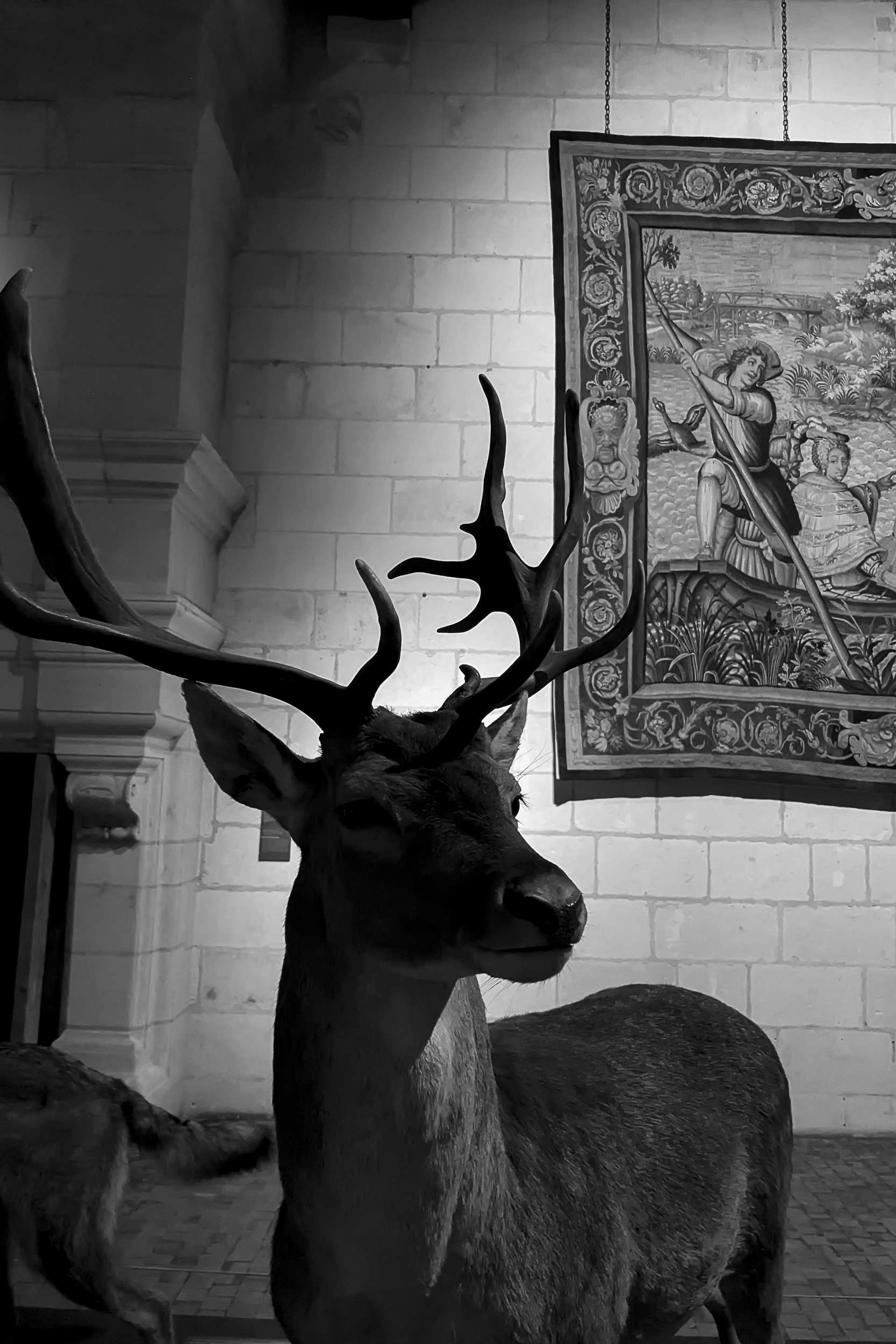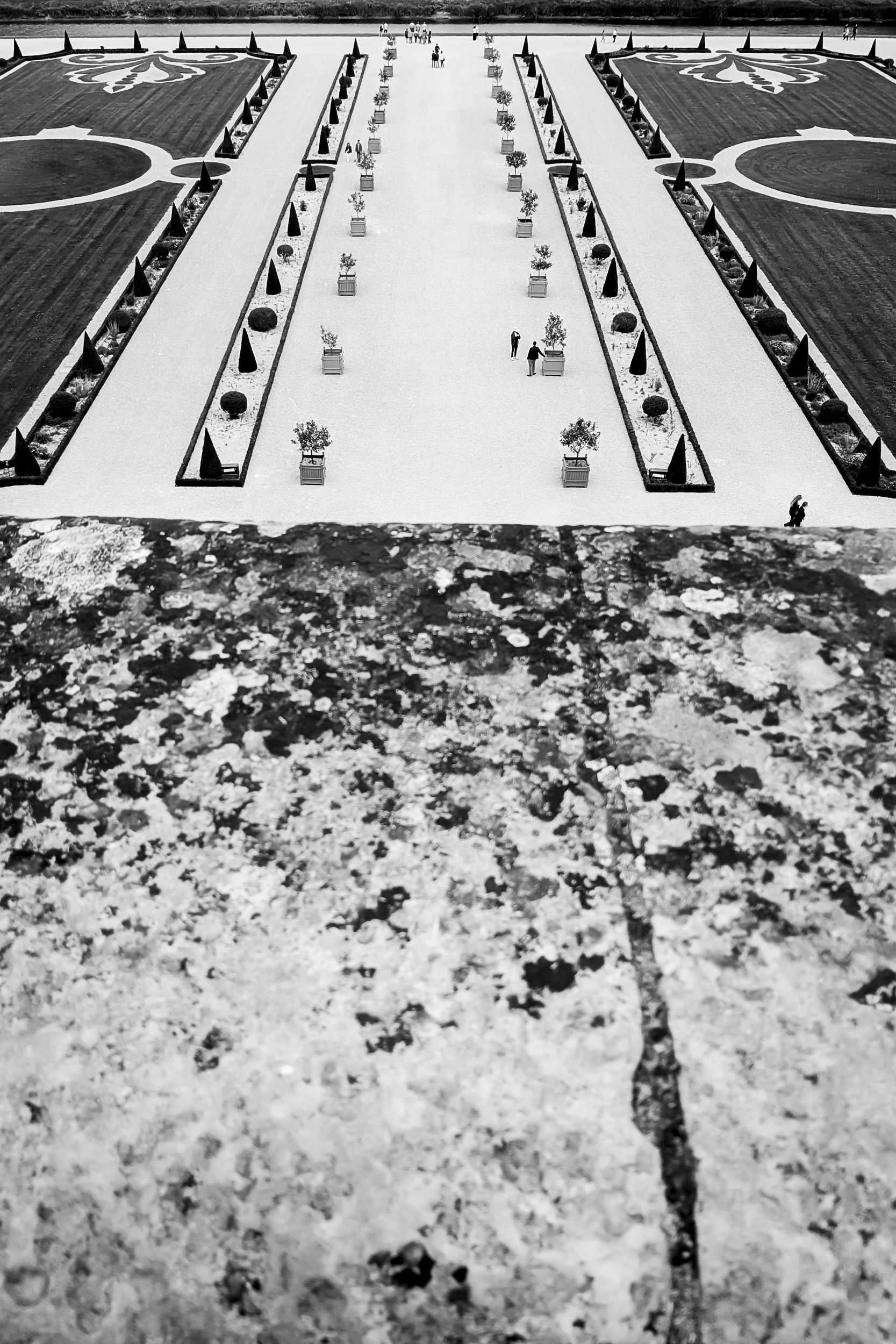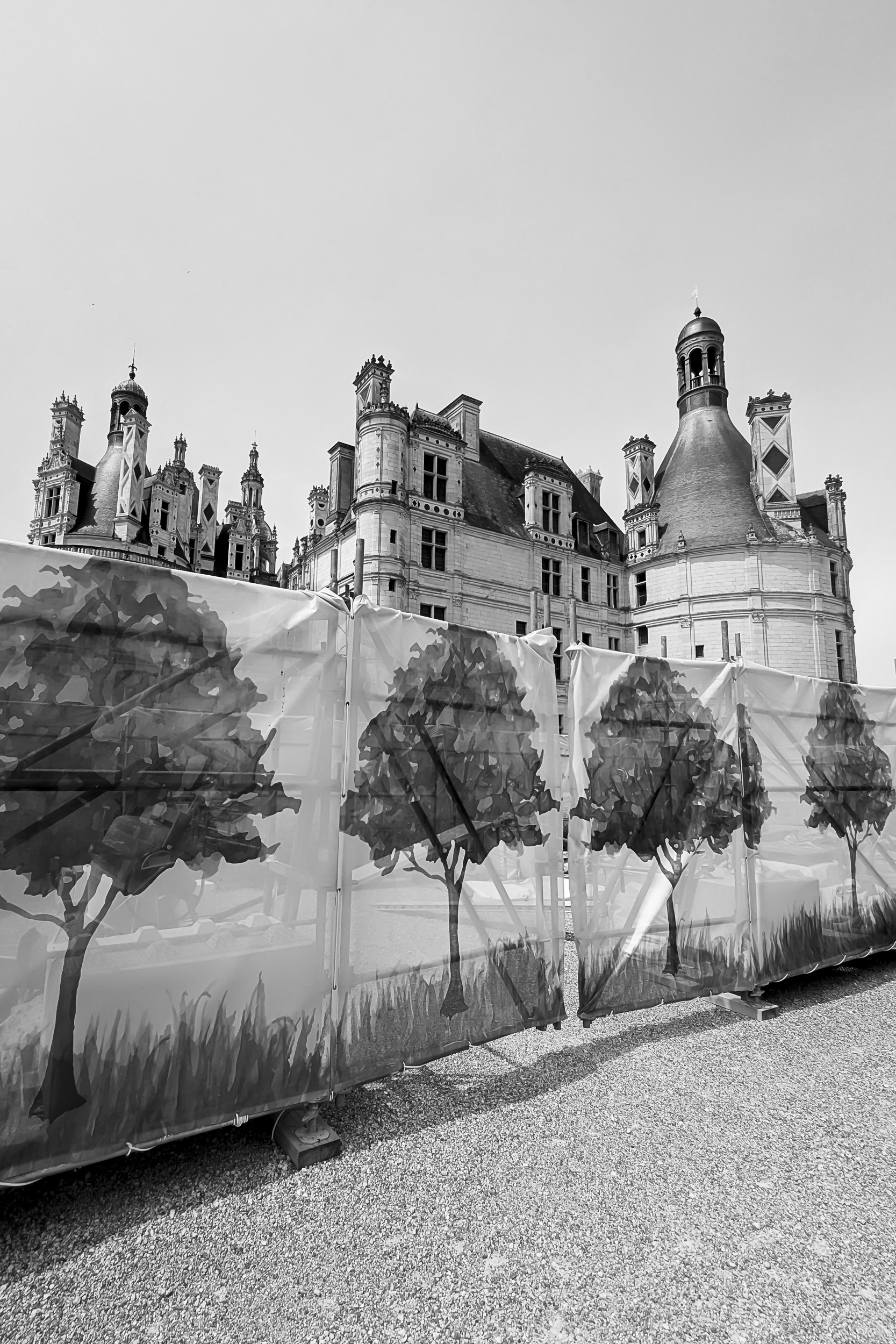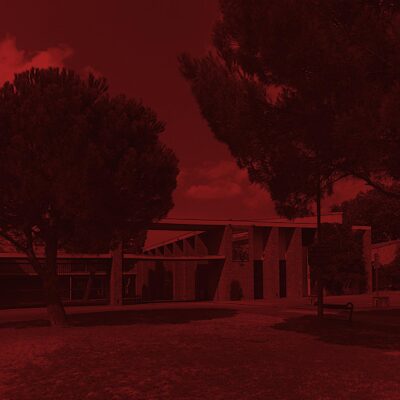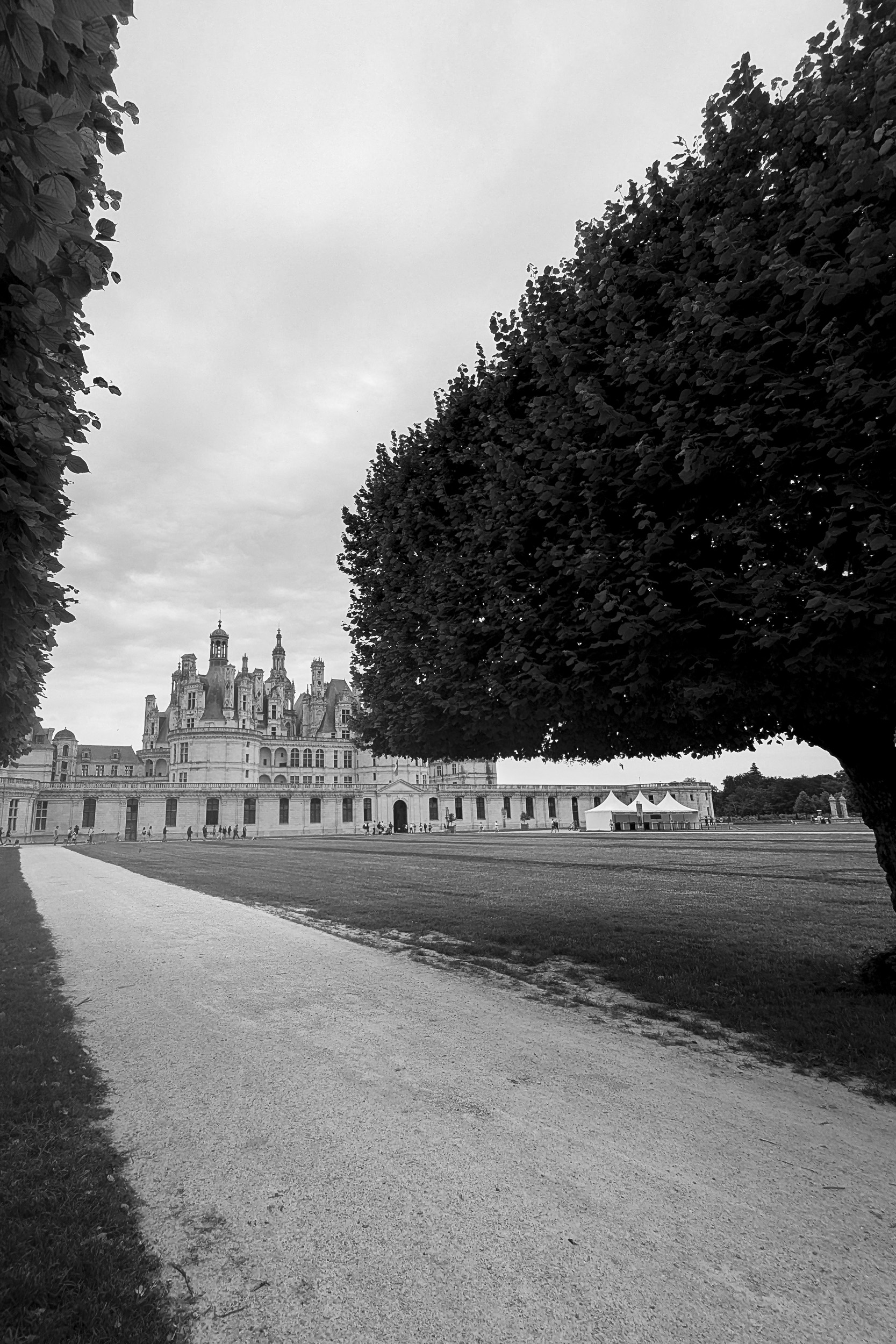
Chambord hits you from the first glance. Its towers and silhouette cutting sharply against the sky immediately reveal that this château is more than a monument: it’s a graphic composition in stone. Its roofs, dormers, chimneys, and iconic double-helix staircase aren’t just decorative—they’re lines, shapes, patterns every photographer dreams of capturing. Every angle offers rhythm; every perspective invites a dialogue between symmetry and movement. In black and white, Chambord’s complexity is revealed in full. Stripped of color, the architecture’s rigor, volume, and the play of light and shadow emerge in stark clarity.
Chambord is also history made tangible. François I, visionary king and art patron, imagined a château that would serve as both a royal residence and a bold statement of power and taste. Leonardo da Vinci, spending his final years in France, influenced Chambord’s design—most famously in the double-spiral staircase, two intertwined helices that never meet, a marvel of engineering and elegance. Photographing it is like capturing a physical manifestation of genius, where geometry meets poetry.
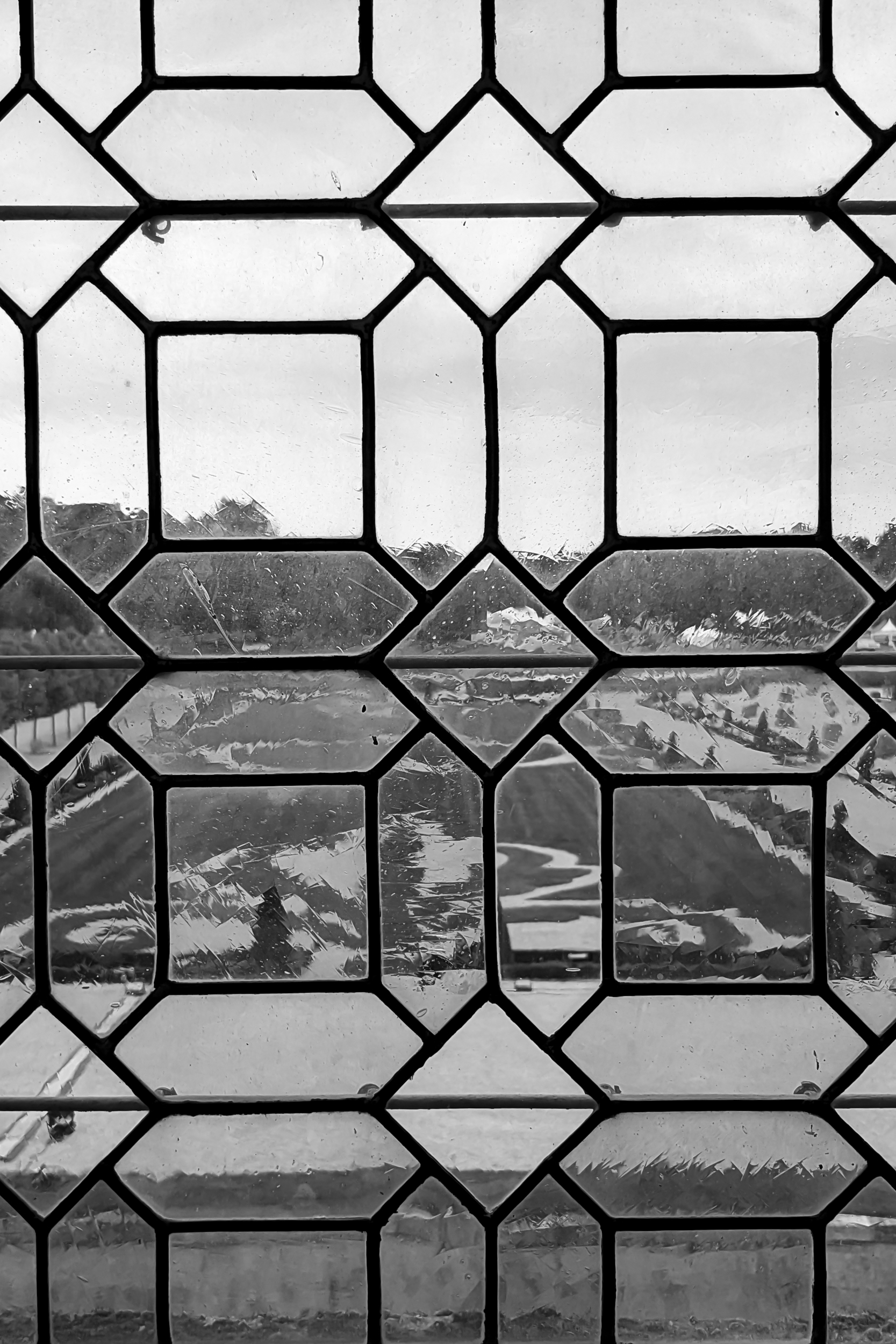
The château’s magic doesn’t stop at its façade. Every turret, dormer, and chimney is sculptural, a graphic element in its own right. In black and white, these details gain extraordinary presence. Light sculpts the stone, shadows deepen the relief, and each shot becomes almost abstract. Photography unveils what the eye alone might miss: the harmonious structure, the geometric precision, the intricate choreography of towers against the sky.
The gardens and park extend this visual composition. French-style paths echo the château’s symmetry, creating a rhythm the camera can accentuate. Canals and ponds reflect light and architecture, adding layers of depth. Each season reshapes the landscape, offering new opportunities for framing and lighting. The photographer becomes an explorer, capturing these shifts as different ways to tell Chambord’s story.
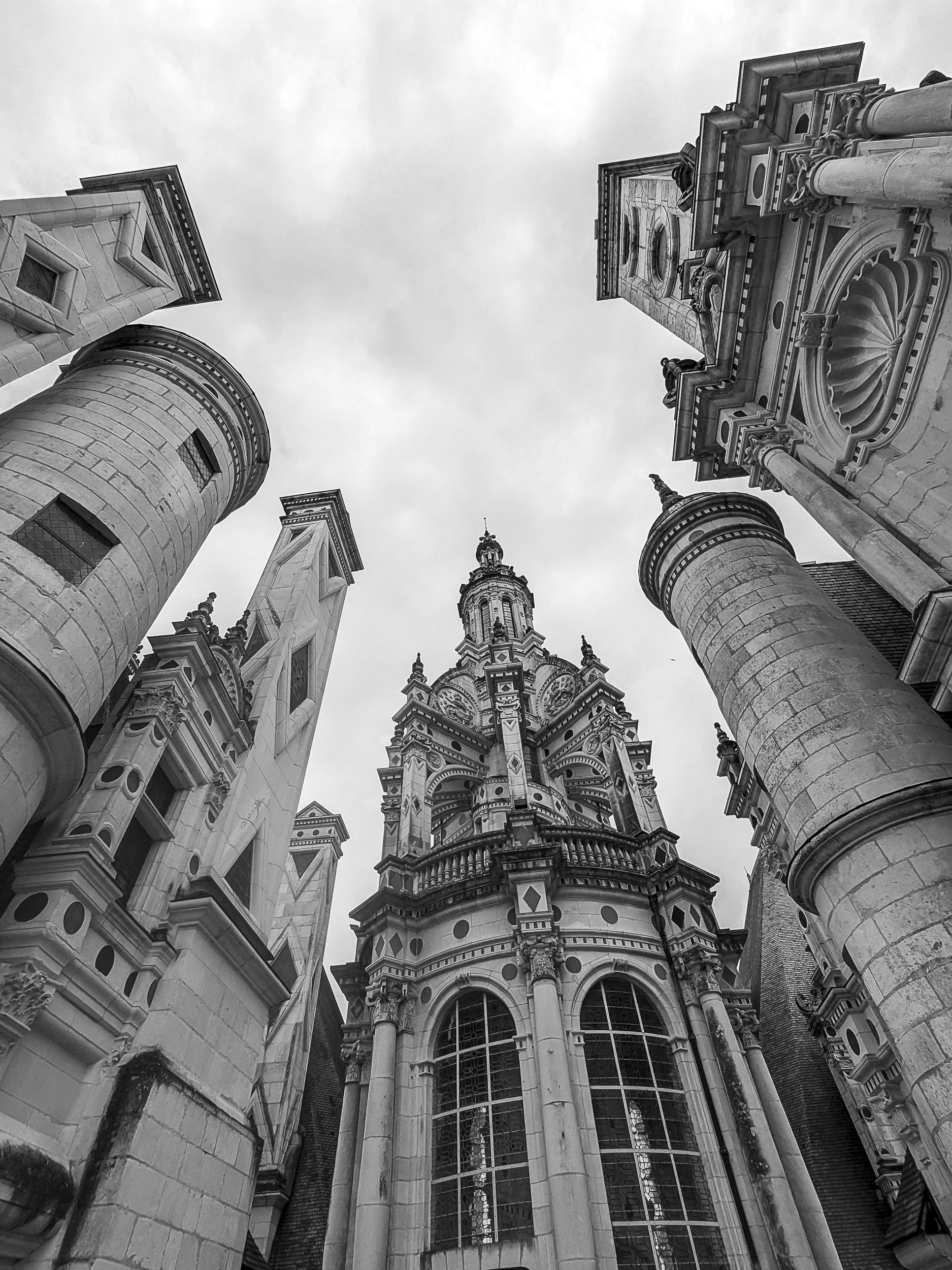
Chambord’s history isn’t just François I and Leonardo da Vinci. The château has endured wars, revolutions, royal ambitions. It welcomed kings and artists, experienced neglect, and underwent restorations. Each stone, sculpture, and roof carries centuries of memory. Photographing Chambord is a dialogue with suspended time, translating the convergence of art and history into images. It’s capturing the elegance of a monument that has withstood centuries while preserving the freshness and force of its original design.
Its photogenic quality becomes mesmerizing with the light. Morning rays highlight stone textures, elongating shadows and creating striking relief. At noon, direct sunlight sharpens contrasts and emphasizes lines. In the evening, the last light bathes the château in a soft, mysterious glow, revealing its almost otherworldly character. Black and white captures these changes with intensity, lending every image a visual power color alone cannot achieve.
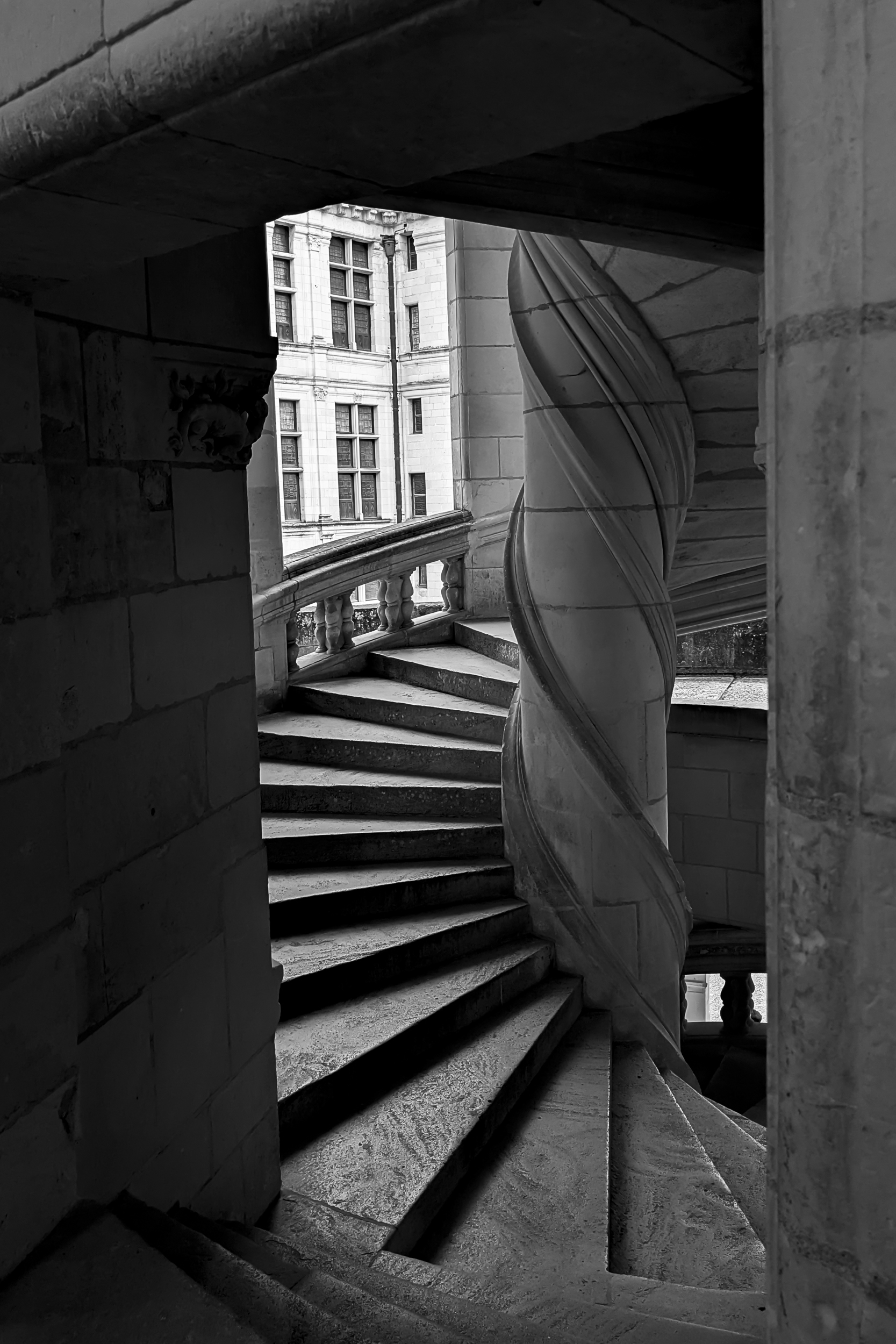
Leonardo’s influence adds another layer. His genius, brought to the French court, resonates in every architectural detail: the double-spiral staircase, the daring proportions, the pursuit of symmetry and balance—all speak of visionary thinking. For the photographer, this historical and artistic dimension enriches each image: you’re not just shooting a château, you’re capturing the intersection of history, art, and human ingenuity.
Chambord balances structure and fantasy. Its towers suggest fairy-tale silhouettes, yet every element is calculated, measured, precise. This tension between grandeur and detail makes each photograph an exercise in composition. The challenge—finding the right angle, manipulating light, isolating lines, capturing rhythm—becomes an opportunity. Black and white clarifies and amplifies this challenge, focusing attention on what truly matters: the graphic power and timeless beauty of the site.
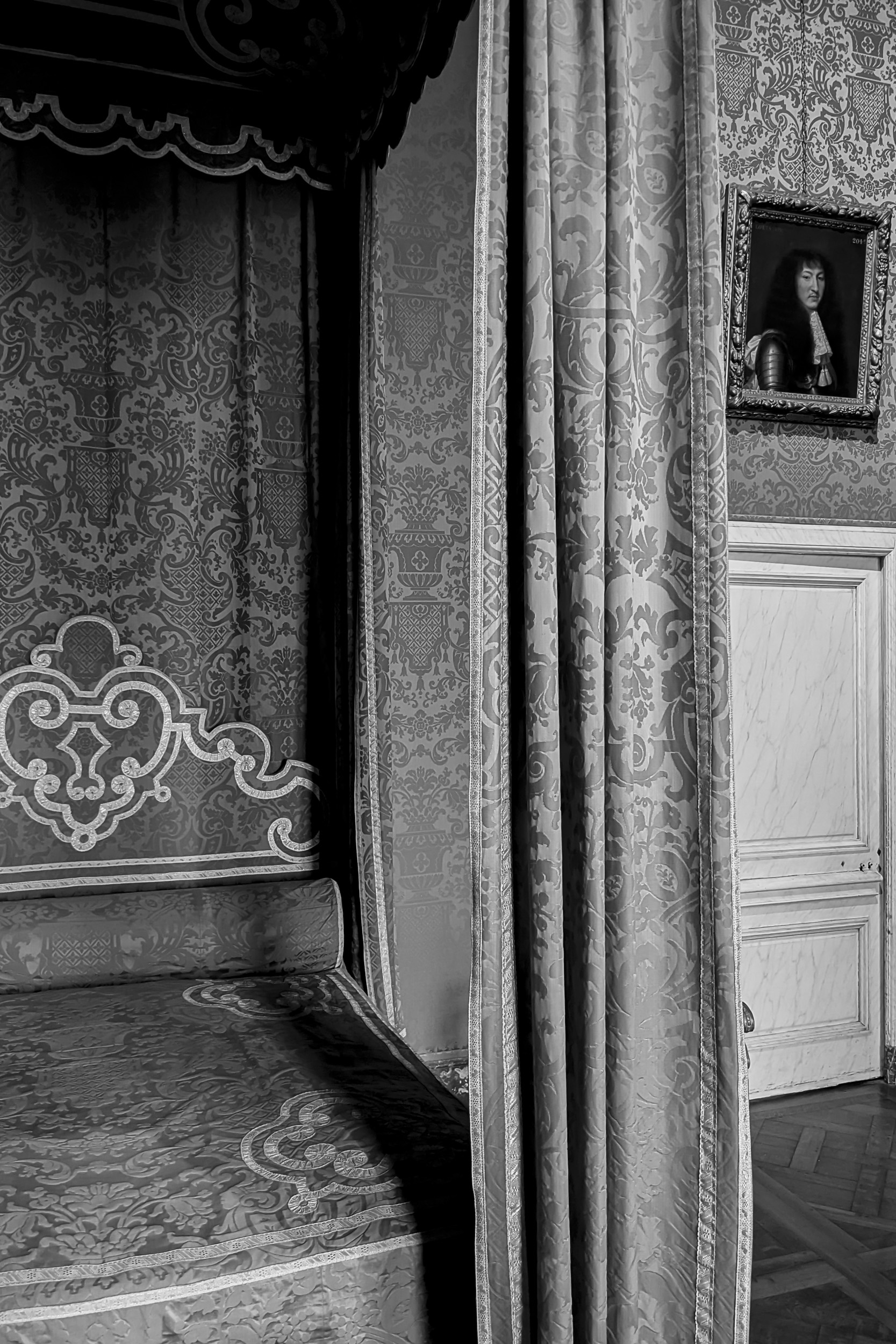
Chambord offers endless perspectives. From afar, it impresses with mass and silhouette; up close, it fascinates with details, patterns, and textures. Every photographer finds a unique visual language to convey this duality. Black and white makes that language stronger, more direct. Stone walls, staircases, roofs, gardens—all become elements of abstract, almost sculptural composition. Reflections in water add additional lines and perspectives, enriching the graphic play.
Photographing Chambord tells a story. The story of the Renaissance, François I’s court, Leonardo da Vinci’s influence, and the mastery of French architecture. It’s capturing the beauty and precision of a monument that has inspired generations. It’s exploring the relationship between humans and space, art and technique, the visible and the imaginary. Each shot becomes a reading, an homage, an exploration.
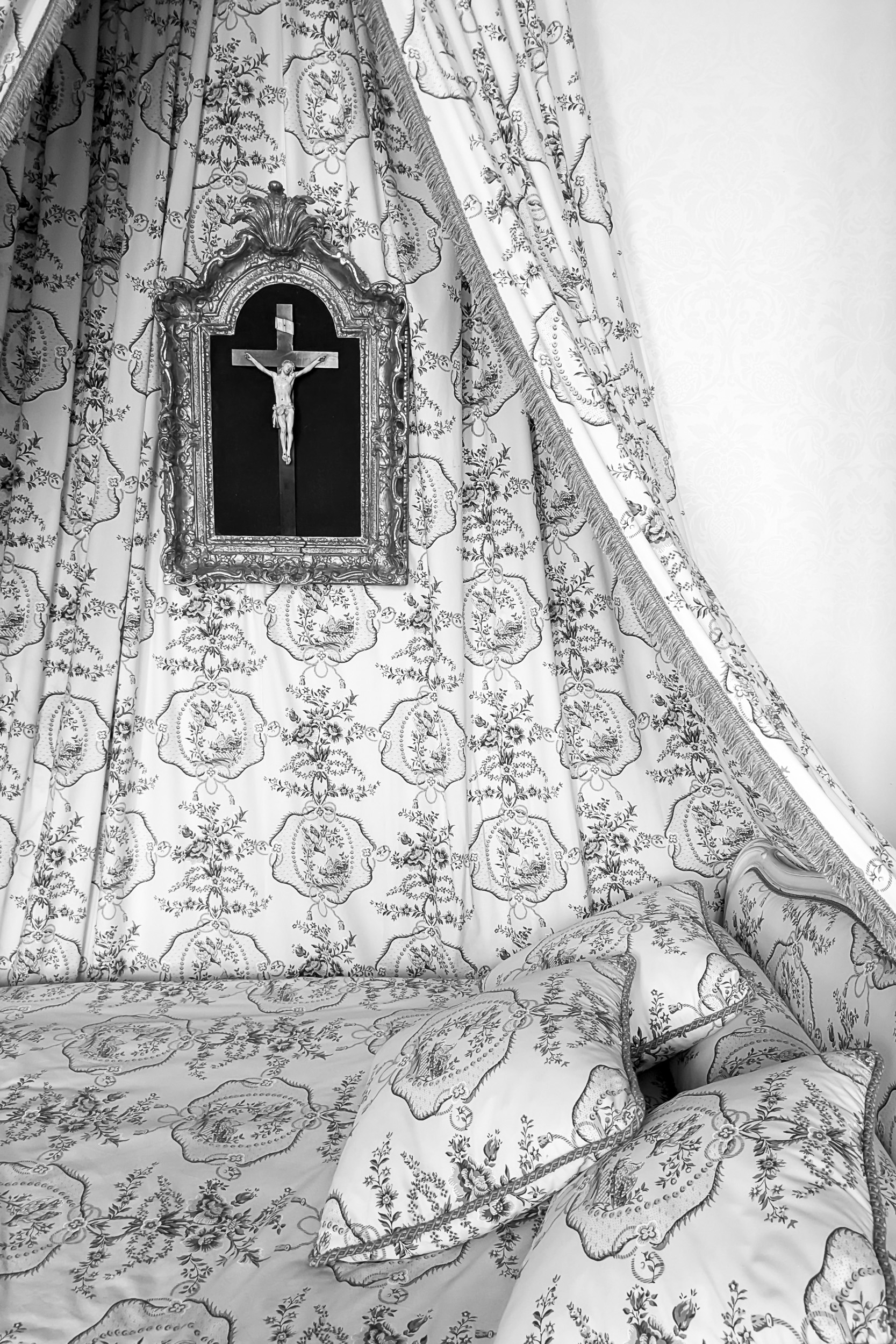
Ultimately, Chambord captivates and fascinates. Its complex architecture, harmonious lines, perfect symmetry, and intricate details offer endless possibilities for photography. Black and white reveals its graphic nature, amplifies contrasts, and highlights the poetry of its forms. Its history and connection to Leonardo da Vinci add depth, turning every image into a visual testament to genius and beauty. For a photographer, Chambord is more than a château: it’s a challenge, an inspiration, an invitation to explore where art, history, and light meet.
